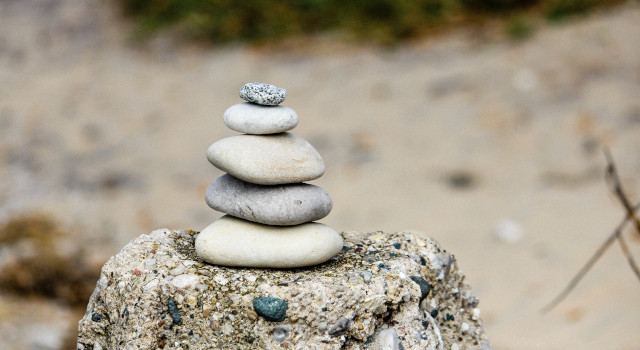
I recently received the following reader question:
I enjoyed reading about your “Rocks and Sand” technique to keep expense ratios low. I own iShares EAFE (EFA) for my foreign rock. What no-transaction fee foreign mutual fund that tracks the EAFE index do you recommend for monthly deposits until I purchase another “rock?”
The “Rocks and Sand” technique comes from the following analogy: Imaging you have several buckets that represent different asset classes you want to invest in. Purchasing large rocks costs money (transaction costs), but they have a lower expense ratio after you have purchased them. Since rocks cost money to be broken up, they aren’t as cost-efficient when you need to move funds from one bucket to another. Buckets can be filled in with sand with a higher expense ratio, but it doesn’t cost any money to move sand from one bucket to another.
The transaction cost of building a portfolio of ETF “Rocks” is more than compensated by the fact that ETFs have lower expense ratios. IShares MSCI EAFE (EFA) is the most popular ETF for foreign stock investing. Its expense ratio is only 0.35%, an entire percentage less than the typical foreign stock funds. Lower expense ratios are saved every year, while transaction costs are only incurred in the year the investment is purchased or sold.
To reap the benefits of monthly additional investments and lower expense ratios, we use a combination of ETFs and no-transaction fee mutual funds. We invest large amounts in ETF shares that provide the rough asset allocation “Rocks” we are seeking to save on expense costs. These positions aren’t bought and sold to take advantage of lower expense ratios without incurring transaction costs. Smaller monthly amounts are invested in no-transaction fee no-load mutual funds on a regular basis, like “sand” filling in around the “Rocks”. These funds have slightly higher expense ratios, but the amounts are small compared to ETFs, so the overall portfolio expenses remain small. Then, when a significant amount of “sand” dollars collect in the mutual fund of one asset class, that fund is sold and a lower expense ratio ETF “Rock” is purchased in its place. Conversely, if an asset class needs to be reduced, some of the ETF is sold and the smaller portion of the proceeds is reinvested in a similar mutual fund.
The lowest cost method for keeping an asset allocation model balanced is to buy mostly rocks for each of the buckets of a diversified portfolio, and then add the sand of a no-transaction-fee mutual fund into the bucket that needs rebalancing. Whenever too much sand has accumulated in one of our 6 buckets, we sell the sand and replace it with another rock. If the weight of the rock(s) in one bucket gets to be too much, we sell a piece of rock and replace it with some sand which can be easily moved into one of the other buckets.
This “rocks and sand” technique can enhance your portfolio returns by as much as a full percent each year. This is especially true for portfolios between $500,000 and $1 million. There are even more powerful techniques that can be used for amounts in excess of $1 million. For large accounts, engaging a Fee-Only financial planner often pays for itself in lower expense ratios alone.
An analysis of efficient markets suggests that even a random collection of individual stocks can provide an adequate approximation of an index. If a random collection of stock can approximate the index, then stocks in a mutual fund can do the same. For our sand in small accounts we will sometimes use the following funds: Artisan International Value (ARTKX) up 23.77% over the last year, Artisan International (ARTIX) up 26.75%, Artisan International Small Cap (ARTJX) up 37.13%, and Excelsior Emerging (UMEMX) up 40.54%.
Some of the funds we use may be closed to the average investor and available only to institutional investors. But you should be able to substitute other funds with good characteristics for the sand in your portfolio.
While the EAFE index returned 27.00%, the iShares EAFE exchange traded fund returned 26.85%. Some years the actively managed funds we use as sand will beat the index funds and some years they will fall short. So long as you evaluate the funds you use carefully I would not worry if they are index funds or actively managed. The amounts you are investing in sand are small compared to the amount you have invested in the rocks of index funds. So long as your sand is in the ball park, they can provide a good holding place until you get enough assets to justify purchasing a larger rock.
Sand also doesn’t need to be in exactly the same index as your rock. Sand can also be used to further diversify your portfolio. Perhaps you are only purchasing rocks in the EAFE Index. You can use the sand of a no-transaction fee index or actively managed fund to add emerging markets, foreign value or foreign small cap to increase your diversification and boost your returns while waiting to buy another rock. So you can be less concerned about finding no-transaction fee mutual funds that exactly track your exchange traded funds and focus instead on selecting the best funds in the general category.
Photo by Rachel Nickerson on Unsplash